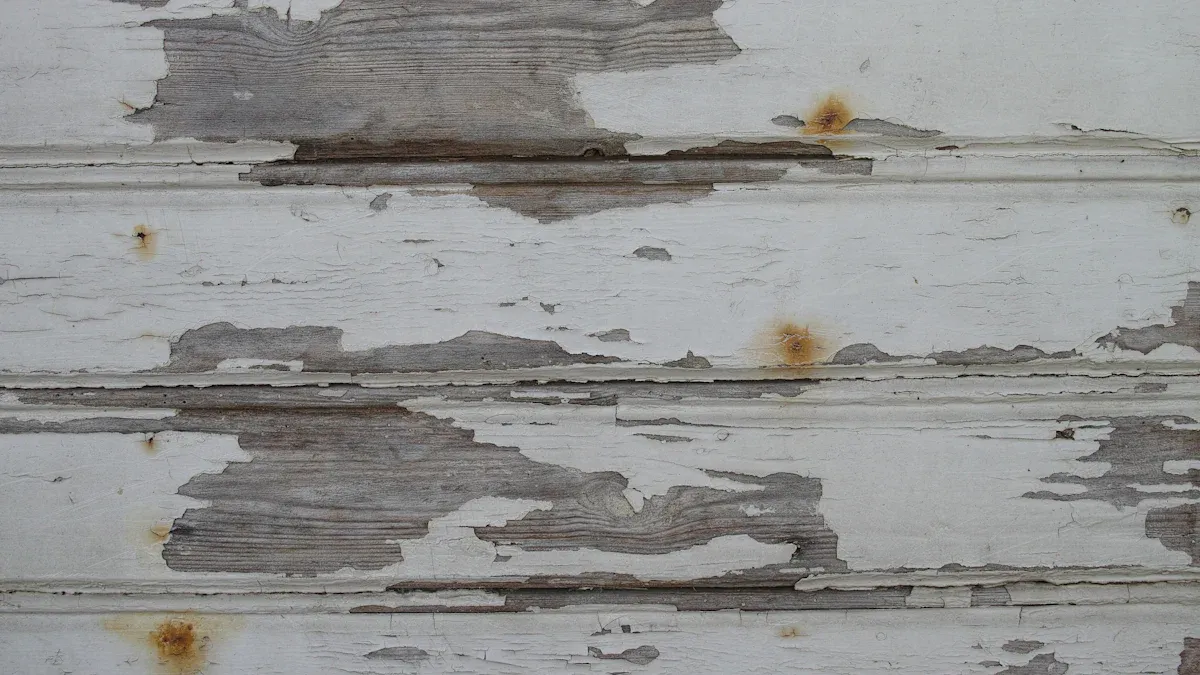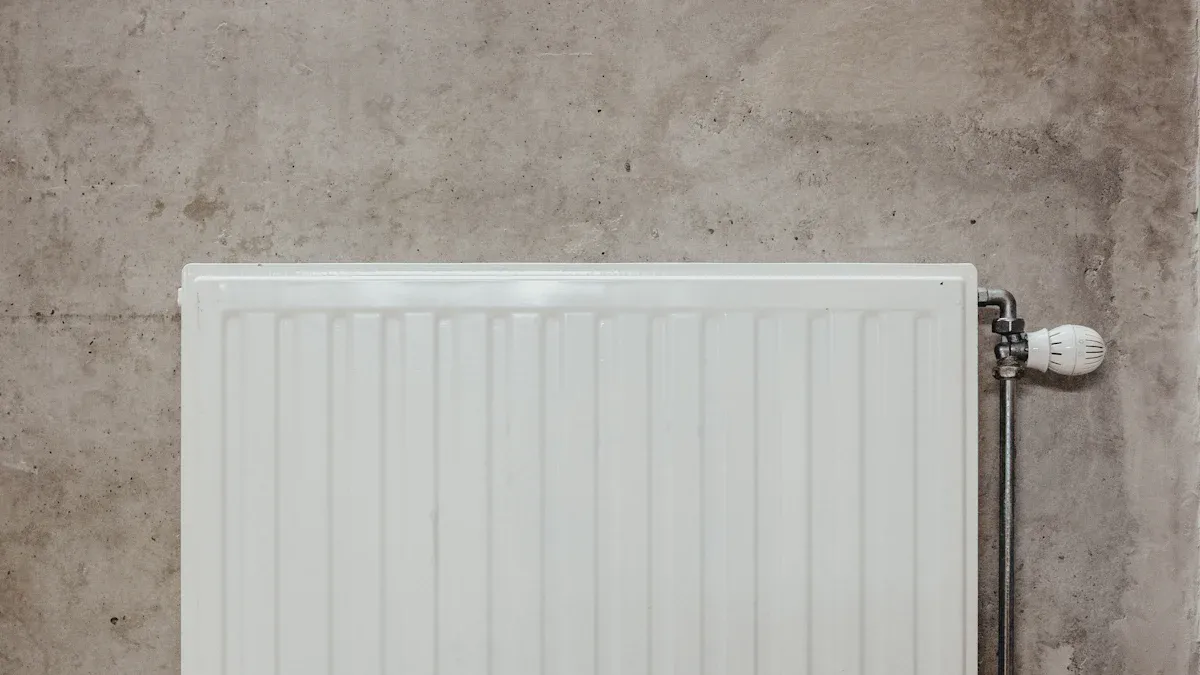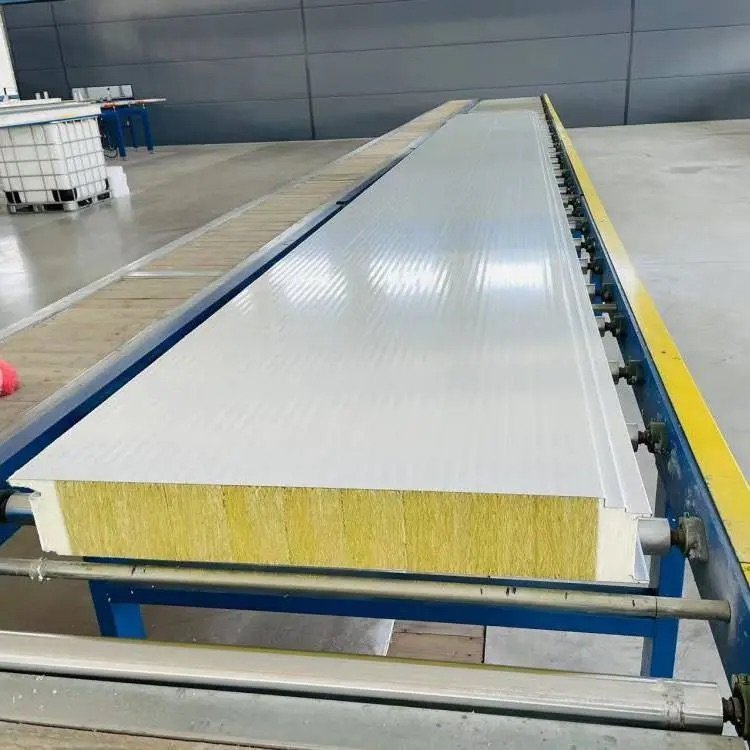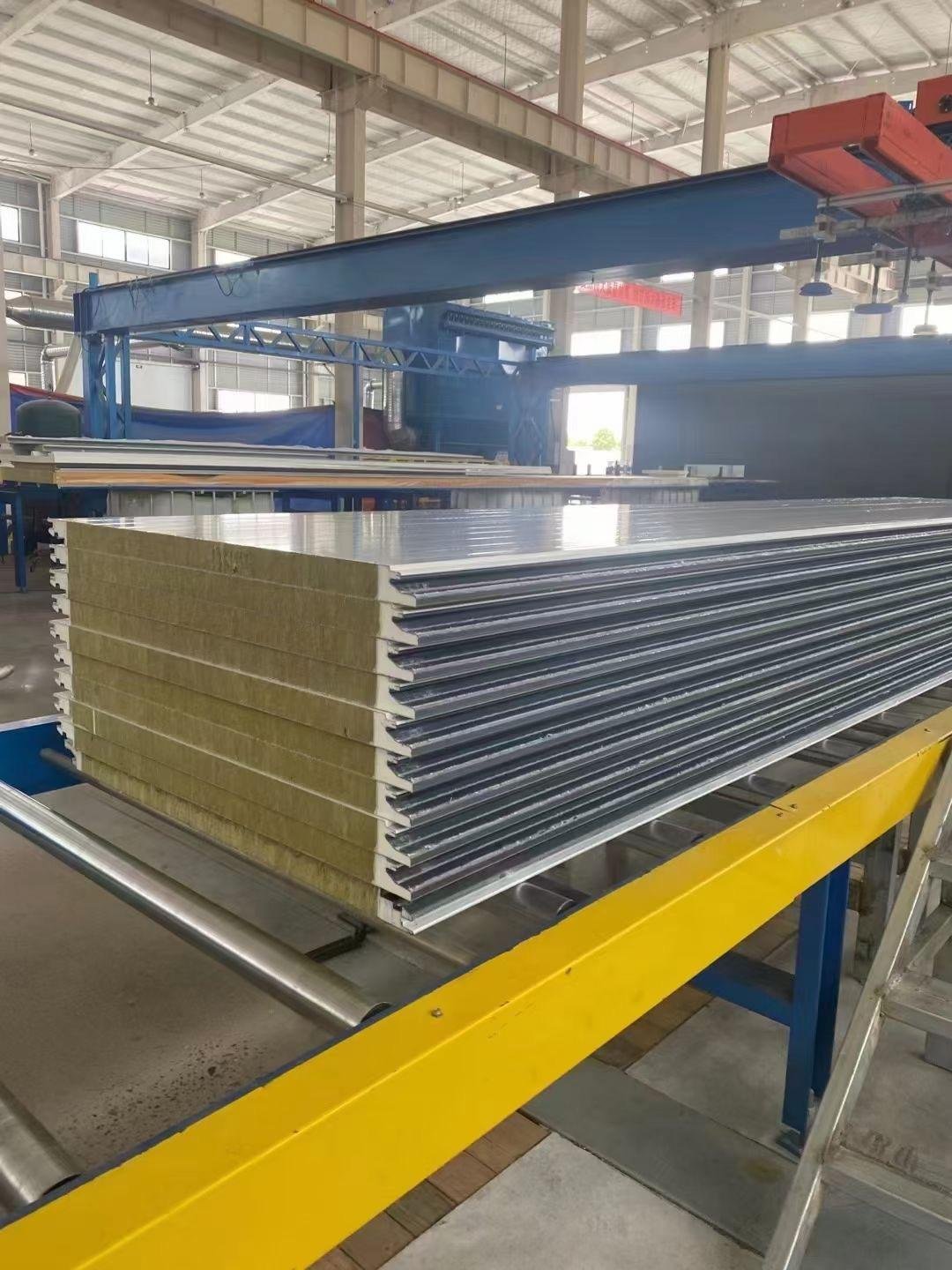
Choosing the best insulation for your project can be tricky. PU sandwich panels are great because they keep heat in well. Other panels like EPS, Rockwool, and Glass Wool are better for fire safety or blocking noise. Each type works best for certain jobs. Knowing their differences helps you pick the best and cheapest option for your project.
Key Takeaways
PU sandwich panels keep heat in or out, saving energy.
They resist fire, making buildings safer, but not like Rockwool.
PU panels are useful for many things like cold storage.
They cost more at first but save money over time.
Think about fire safety, insulation, and budget before picking panels.
Overview of PU Sandwich Panels

What are PU Sandwich Panels?
PU sandwich panels are special materials used for insulation. They have a foam core made of polyurethane placed between two layers. These layers are usually steel or aluminum. This setup makes them strong and good at keeping heat in. The foam is injected between the layers to make them stick well and block heat effectively.
These panels are light and can be used in many ways. They resist fire and water, making them useful in different places. You’ll find them in cold storage, prefab buildings, and modular offices.
New improvements have made PU panels even better. Advanced foams like PU and PIR now insulate more efficiently. These upgrades help save energy by lowering heating and cooling costs.
Key Features of Polyurethane Sandwich Panels
Polyurethane sandwich panels have unique qualities. The table below shows their main features:
Feature | Description |
|---|---|
Thermal Insulation | Keeps heat in or out, saving energy costs. |
Fire Resistance | Slows down fire spread, making buildings safer. |
Structural Strength | Foam core adds strength and durability. |
Moisture Resistance | Stops mold, keeping air clean indoors. |
Versatility in Applications | Works for many uses, like roofs and cold storage. |
These features make PU sandwich panels a dependable choice for insulation.
Applications of PU Sandwich Panels in Insulation
PU sandwich panels are used in many construction projects. They are great for cold storage because they keep temperatures steady. Prefab homes and portable cabins also use them since they are light and strong.
You’ll also see these panels in modular offices and factories. Their fire and water resistance make them safe and long-lasting. Using PU sandwich panels helps save energy and money in many ways.
Comparing PU Sandwich Panels with Other Insulation Panels

PU Sandwich Panels vs. EPS Panels
Thermal Performance
PU panels keep heat in better than EPS panels. Their foam core blocks heat well, making them great insulators. EPS panels need to be thicker to work as well. PU panels are better when space is tight.
Fire Resistance
PU panels are treated to slow fire spread. EPS panels catch fire more easily and may not meet strict safety rules. For fire-safe projects, PU panels are the smarter pick.
Weight and Handling
EPS panels are lighter and easier to move around. PU panels are heavier because they are stronger. This strength makes them harder to install but more durable.
Cost Comparison
EPS panels cost less at first, so they’re good for small budgets. PU panels save money later by keeping energy costs low.
Environmental Impact
PU panels have chemicals that make them hard to throw away. EPS panels break down over time, adding to waste. Neither is eco-friendly, but PU panels last longer, so they need fewer replacements.
PU Sandwich Panels vs. Rockwool Panels
Thermal Performance
PU panels are great for keeping indoor temperatures steady. Rockwool panels handle extreme temperature changes better. Pick based on your project’s needs.
Fire Resistance
Rockwool panels are better at handling fire. They can take heat up to 1000°C without extra treatments. PU panels can’t match this fireproof ability, even with fire retardants.
Durability and Moisture Resistance
PU panels don’t soak up water, so they last longer. Rockwool panels are strong too but need protection from water. Both are good, but PU panels resist moisture better.
Cost Comparison
Rockwool panels cost more upfront but save money over time. PU panels also save money later with their strong insulation.
Environmental Impact
Rockwool panels are made from natural materials and can be recycled. PU panels have more chemicals, making them less eco-friendly. For green projects, Rockwool is the better choice.
PU Sandwich Panels vs. Glass Wool Panels
Thermal Performance
PU panels insulate better in less space. Glass wool panels need to be thicker to work as well. PU panels are best when saving space is important.
Fire Resistance
Glass wool panels don’t burn and can handle high heat. They also don’t release harmful fumes. PU panels need fire treatments and aren’t as fireproof.
Weight and Installation
Glass wool panels are light and easy to install. PU panels are heavier but stronger, which helps in some projects.
Cost Comparison
Glass wool panels are cheaper at first, making them good for tight budgets. PU panels cost more but save money later with better insulation.
Environmental Impact
Glass wool panels are made from natural materials and are eco-friendly. PU panels have chemicals that harm the environment. For eco-friendly projects, glass wool is the better pick.
PU Sandwich Panels vs. PIR Panels
Thermal Performance
PU and PIR panels both keep heat in well. PIR panels work slightly better because of their special design. They are great for projects needing top insulation. PU panels are still very good, especially in tight spaces. Both save energy, but PIR panels are better in tough climates.
Fire Resistance
PIR panels handle fire better than PU panels. Their makeup makes them safer in high heat and less harmful during fires. PU panels are treated for fire safety but aren’t as fireproof as PIR panels. For strict fire rules, PIR panels are the best choice.
Durability and Longevity
Both panels are strong, but PIR panels last longer. They hold up better in rough conditions. PU panels are also tough and resist water, making them useful in many places. PIR panels stay strong for more years, needing fewer replacements.
Cost Comparison
PU panels cost less at first, making them good for small budgets. PIR panels cost more but save money later with better insulation and durability. If long-term savings matter, PIR panels are worth the extra cost.
Environmental Impact
PIR panels are kinder to the environment than PU panels. They use fewer bad chemicals and last longer, creating less waste. PU panels work well but aren’t as eco-friendly. For green projects, PIR panels are the smarter pick.
Factors to Think About When Picking Insulation Panels
Keeping Heat In and Saving Energy
Picking the right insulation is important for your building. PU sandwich panels are great at keeping indoor spaces warm or cool. They stop heat from moving in or out, saving energy and lowering bills. These panels can last 30 to 50 years if cared for well. They are strong and handle tough weather, making them a smart long-term choice.
Key things to check for good insulation:
Stops heat from escaping or entering.
Saves energy by cutting heating and cooling costs.
Works well even in bad weather.
Using panels with top-notch insulation helps save energy and protects the environment.
Fire Safety and Protection
Fire safety matters when choosing insulation panels. PU sandwich panels have special fire-resistant chemicals. They can handle heat up to 700°F, slowing down flames in emergencies. Rockwool panels are even better, resisting heat up to 1000°C without extra treatments.
Here’s a fire safety comparison:
Panel Type | Fire Resistance Features |
|---|---|
PU Sandwich Panels | Fire-resistant chemicals, handles heat up to 700°F |
Rockwool Panels | Naturally fireproof, handles heat up to 1000°C |
EPS Panels | Needs extra fireproofing treatments |
For strict fire safety needs, pick panels with strong fire resistance.
Costs and Budget
Your budget affects which insulation you choose. PU sandwich panels cost more upfront than EPS or glass wool. But they save money later with better insulation. In very hot or cold places, PU panels lower heating and cooling costs over time.
Quick cost comparison:
Glass wool panels are cheaper but need replacing often.
EPS panels are low-cost but don’t insulate as well.
PU panels cost more but save money with durability and energy savings.
Balancing cost now with future savings helps you pick the best option for your building.
Environmental Sustainability and Impact
When picking insulation, think about its effect on nature. Some panels, like glass wool and Rockwool, are made from natural or recyclable stuff. Others, like polyurethane (PU) sandwich panels, use chemicals that might harm the planet. But PU panels last longer, so they don’t need to be replaced often. This helps cut down on waste over time.
Studies show bio-based materials like recycled cotton and hemp fiber are great. They are made sustainably and have the least harm to the environment. These materials help buildings reach net-zero goals with almost no long-term impact.
PU sandwich panels aren’t made from natural materials, but they save energy. By cutting heating and cooling needs, they lower carbon emissions. If you care about the environment, choose panels made from renewable or recyclable materials.
Application-Specific Requirements (e.g., roofing, walls, cold storage)
Different jobs need different insulation types. For roofs, lightweight panels like EPS or glass wool are good. They’re simple to install and don’t add much weight. PU sandwich panels also work well for roofs, giving strong insulation and lasting a long time.
For walls, fire-resistant panels are important. Rockwool panels are great for areas with fire risks. PU panels are also good, especially where keeping out moisture matters.
Cold storage needs insulation that keeps temperatures steady. PU sandwich panels are the best choice for this. They save energy and keep things cool, making them perfect for storing food.
By knowing what your project needs, you can pick the right panels. Whether it’s for roofs, walls, or cold storage, each panel type has its own strengths.
Knowing how PU Sandwich Panels differ from other insulation panels helps you choose wisely. PU panels are great at keeping heat in, resisting fire, and staying strong. They work better than EPS panels for saving energy and lasting longer. Glass wool panels resist fire well but don’t insulate or last as long as PU panels.
Key Takeaway: PU Sandwich Panels are perfect for projects needing top insulation, energy savings, and durability. They are best for cold storage, modular buildings, or places where safety and insulation matter most.
Think about heat control, fire safety, and cost to pick the best panel for your project.
FAQ
Why are PU Sandwich Panels better for insulation?
PU Sandwich Panels insulate well because of their polyurethane foam core. This foam stops heat from moving, saving energy. They help lower heating and cooling costs while keeping rooms comfy.
Are PU Sandwich Panels resistant to fire?
Yes, PU Sandwich Panels have chemicals that slow down flames. But they aren’t as fireproof as Rockwool or Glass Wool panels. For strict fire safety, Rockwool might be a better choice.
Can PU Sandwich Panels be used on roofs?
Yes! PU Sandwich Panels are strong but still lightweight. They insulate well and keep water out, making them great for roofs. You can use them in many building projects, including roofing.
Do PU Sandwich Panels harm the environment?
PU Sandwich Panels last a long time, so they need fewer replacements. This reduces waste. But they have chemicals that aren’t eco-friendly. If you want greener options, try Rockwool or Glass Wool panels.
Are PU Sandwich Panels worth the cost?
PU Sandwich Panels cost more at first than EPS or Glass Wool. But they save money later by cutting energy bills. They’re a smart pick for long-term projects needing strong insulation.
Tip: Think about your project’s needs like fire safety, insulation, and budget before picking a panel.







